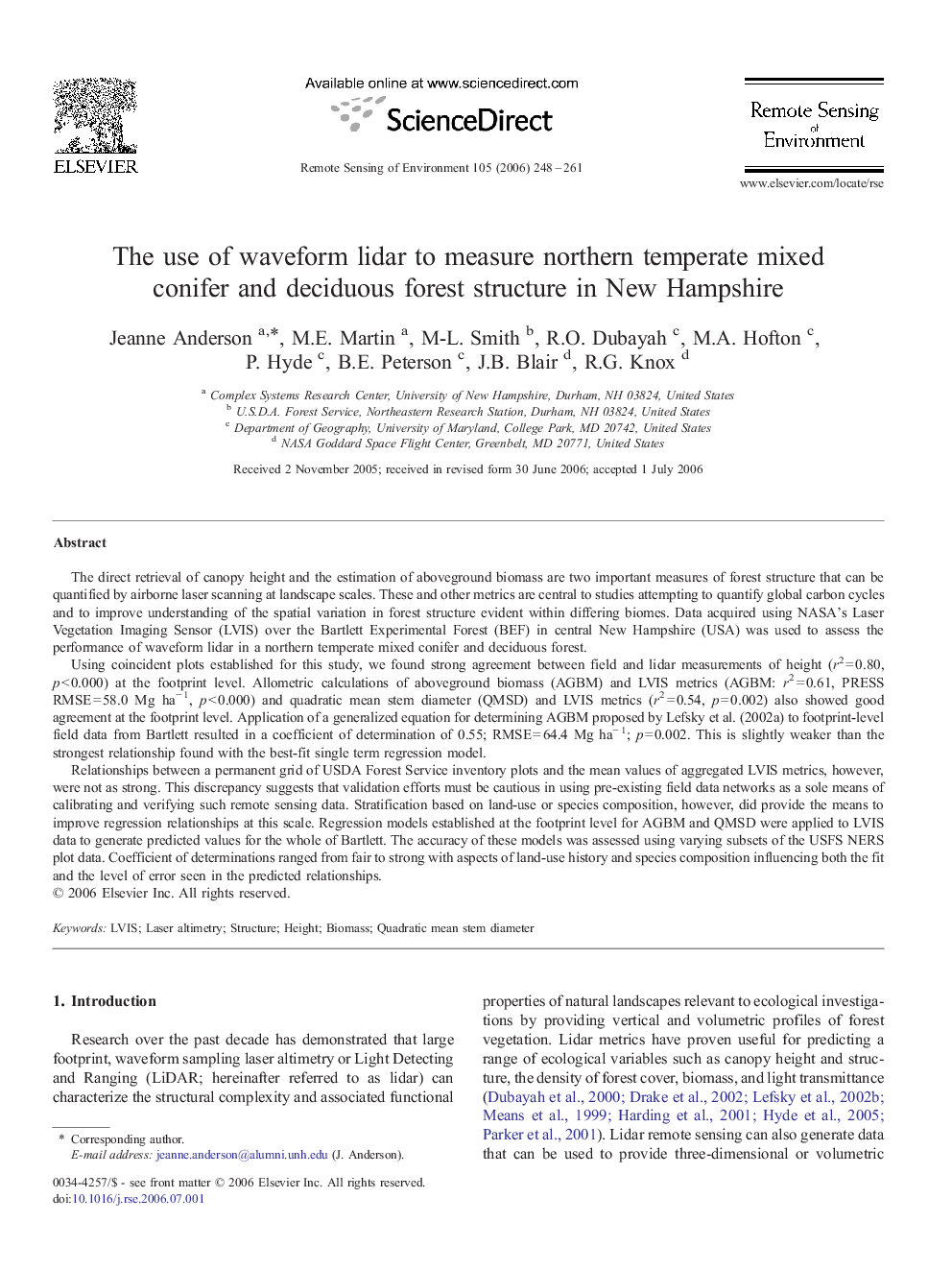| کد مقاله | کد نشریه | سال انتشار | مقاله انگلیسی | نسخه تمام متن |
|---|---|---|---|---|
| 4460940 | 1621357 | 2006 | 14 صفحه PDF | دانلود رایگان |

The direct retrieval of canopy height and the estimation of aboveground biomass are two important measures of forest structure that can be quantified by airborne laser scanning at landscape scales. These and other metrics are central to studies attempting to quantify global carbon cycles and to improve understanding of the spatial variation in forest structure evident within differing biomes. Data acquired using NASA's Laser Vegetation Imaging Sensor (LVIS) over the Bartlett Experimental Forest (BEF) in central New Hampshire (USA) was used to assess the performance of waveform lidar in a northern temperate mixed conifer and deciduous forest.Using coincident plots established for this study, we found strong agreement between field and lidar measurements of height (r2 = 0.80, p < 0.000) at the footprint level. Allometric calculations of aboveground biomass (AGBM) and LVIS metrics (AGBM: r2 = 0.61, PRESS RMSE = 58.0 Mg ha− 1, p < 0.000) and quadratic mean stem diameter (QMSD) and LVIS metrics (r2 = 0.54, p = 0.002) also showed good agreement at the footprint level. Application of a generalized equation for determining AGBM proposed by Lefsky et al. (2002a) to footprint-level field data from Bartlett resulted in a coefficient of determination of 0.55; RMSE = 64.4 Mg ha− 1; p = 0.002. This is slightly weaker than the strongest relationship found with the best-fit single term regression model.Relationships between a permanent grid of USDA Forest Service inventory plots and the mean values of aggregated LVIS metrics, however, were not as strong. This discrepancy suggests that validation efforts must be cautious in using pre-existing field data networks as a sole means of calibrating and verifying such remote sensing data. Stratification based on land-use or species composition, however, did provide the means to improve regression relationships at this scale. Regression models established at the footprint level for AGBM and QMSD were applied to LVIS data to generate predicted values for the whole of Bartlett. The accuracy of these models was assessed using varying subsets of the USFS NERS plot data. Coefficient of determinations ranged from fair to strong with aspects of land-use history and species composition influencing both the fit and the level of error seen in the predicted relationships.
Journal: Remote Sensing of Environment - Volume 105, Issue 3, 15 December 2006, Pages 248–261